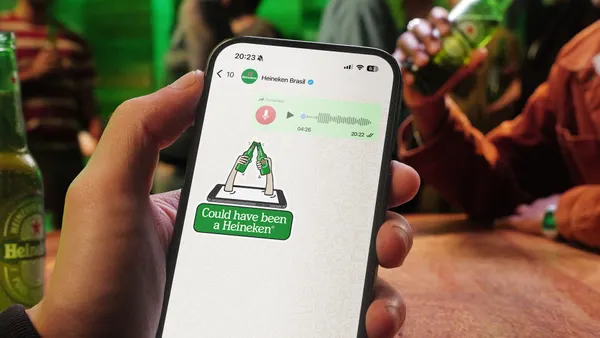Dive Brief:
- George Bush Intercontinental Airport and William P. Hobby Airport in Houston began providing an indoor navigation service to help smartphone users find their way to gates, ground transportation, ticket kiosks, shops, restaurants and security checkpoints, according to a press release by the airport system. The turn-by-turn wayfinding technology developed by San Francisco’s LocusLabs doesn’t require a separate app download to work on smartphones, the first of its kind in the world, per the press release.
- By visiting the website fly2houston.com on a mobile browser, a traveler can see a map of the airports that indicates a user’s location with a blue dot. As a person walks around, the navigation tool provides live directions on the quickest way to reach a destination inside the airport. It also shows the estimated time needed to walk to the endpoint.
- The Houston Airport System, which runs the facilities, said airport maps are some of the most frequently visited pages on the fly2houston.com website. George Bush Intercontinental Airport is the 14th busiest in the U.S. and 43rd busiest in the world with 41.6 million passengers a year, according to Airports Council International. William P. Hobby Airport had 12.9 million visitors last year.
Dive Insight:
The Houston Airport System is showing another way that airports can provide indoor navigation information without requiring travelers to download an app that they'll likely use just once or twice a year. The mobile web solution provides the flexibility to work with a variety of smartphones with different platforms or versions of operating systems.
The navigation app may eventually give retailers and restaurants in the airport opportunities to highlight special deals, which is likely to be welcome news for businesses in the airports as North American airport retail sales are estimated to more than double to $9.9 billion by 2020 from $4.2 billion in 2015. Reaching mobile users with an offer when they are nearby could drive traffic into retailers and restaurants.
Because airport apps aren’t nearly as popular as airline apps, which are used more often for frequent flyers loyal to one airline, more airports might strive to implement web-based location systems. Apps for the largest 25 airlines were downloaded 117 million times, or 14x as many downloads for airport apps, according to one estimate by advisers cited in Tnooz. By next year, 80% of airports will have implemented mobile apps, per a SITA survey that suggested airports are wasting money on developing apps. Retail partnerships and beacons may be ways to justify the cost and boost consumer engagement.
Earlier this month, Gatwick Airport, the second-busiest U.K. airport after Heathrow, installed 2,000 beacons to help travelers navigate through its gates, baggage claim and other facilities. The challenge with this strategy compared to what Houston is doing is that beacons require users to download an app. The beacons help to get more accurate personal coordinates on a smartphone’s GPS map, according to Media Post. It also plans to add an augmented reality (AR) feature that will help guide travelers through the airport, as well as talking to airlines about integrating the indoor navigation tool into their respective apps to push notifications like boarding alerts or flight schedule updates to travelers. Eventually, the technology will allow retailers and restaurants inside the airport to insert location-based ads into the smartphone view to promote special offers to visitors at Gatwick or Houston airports, TechCrunch reported.












